13 Ecommerce Follow Up Email Examples to Re-engage Customers & Boost Sales
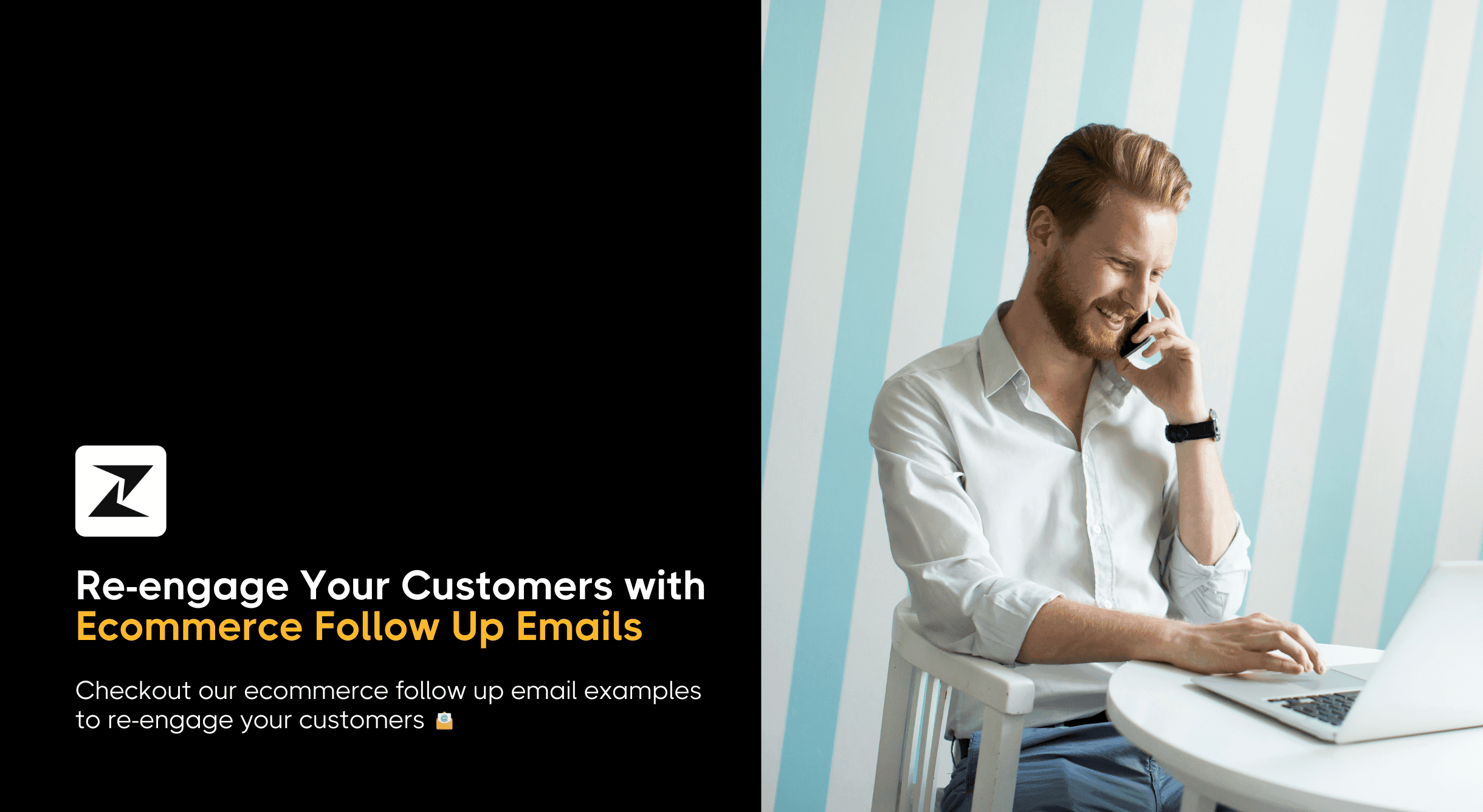
Every day, you must receive hundreds of emails from various businesses you use to buy products online. Sometimes these emails are informative, offering you valuable information about your purchases, account, or delivery but most of the time they are promotional.
Have you ever wondered why businesses are spending time and resources to keep you updated about what is happening within the company? This is because they want to boost sales engagement and encourage you to come back.
From a business’s perspective, these re-engagement emails are a great way to win back customers, convincing them to return to the platform for repeat business or stay fresh in the back of their minds.
For that reason, in this blog post, I’ll explore 13 follow-up email examples that can help you re-engage your customers and drive constant sales. So, let’s explore these emails!
13 e-commerce follow-up email examples
Follow-up emails allow you to reach out to customers continuously and ensure that they do not forget about your existence. After all, by keeping them aware of your presence, you can increase your chances of getting sales if they decide to buy something.
Having said that, here are some of the best follow-up emails for your e-commerce business, helping you make sure your customers are engaged.
Utilizing social proofs
Sending emails to your customers that highlight the usefulness of your products allows you to create a credible image for your brand and entice buyers to make a buying decision using social proof. These proofs enable prospective customers to relate to past ones, and you can use their reviews as a means to address common sales objections that new customers might have.
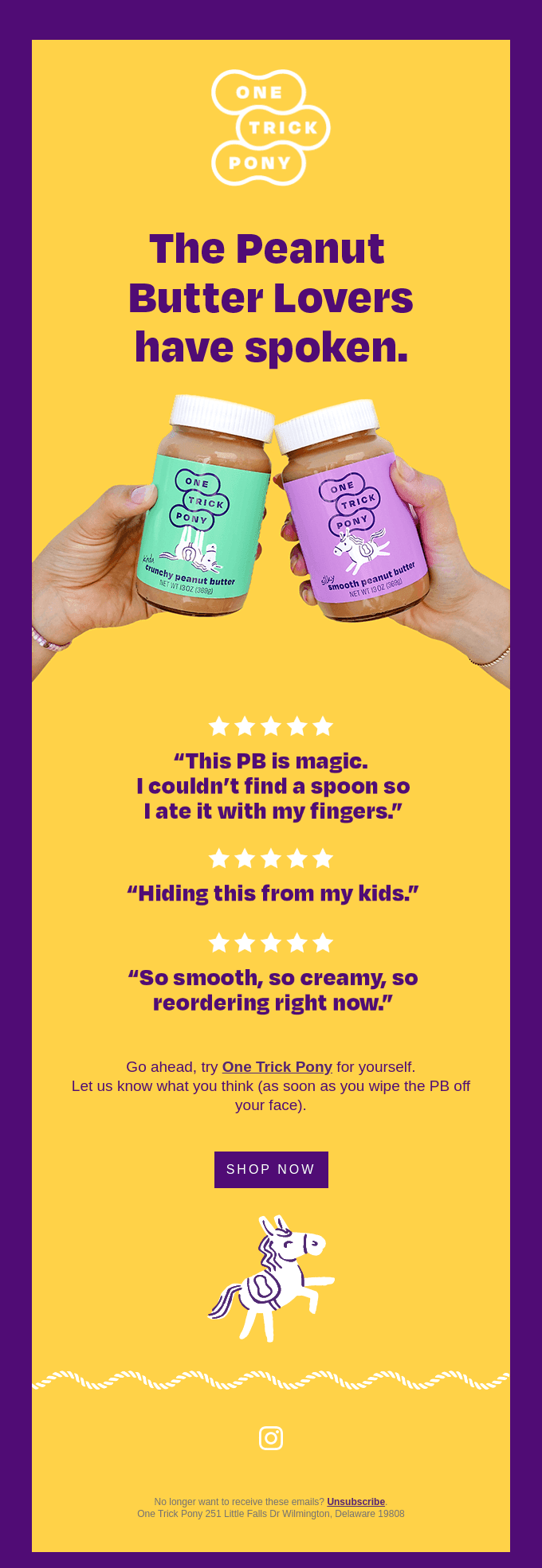
Send tailored win-back emails
In simple terms, win-back emails aim to re-engage inactive customers by reminding them of your brand and offering incentives to return. They are an excellent medium to convert lost customers into active ones without having to go through the acquisition process.
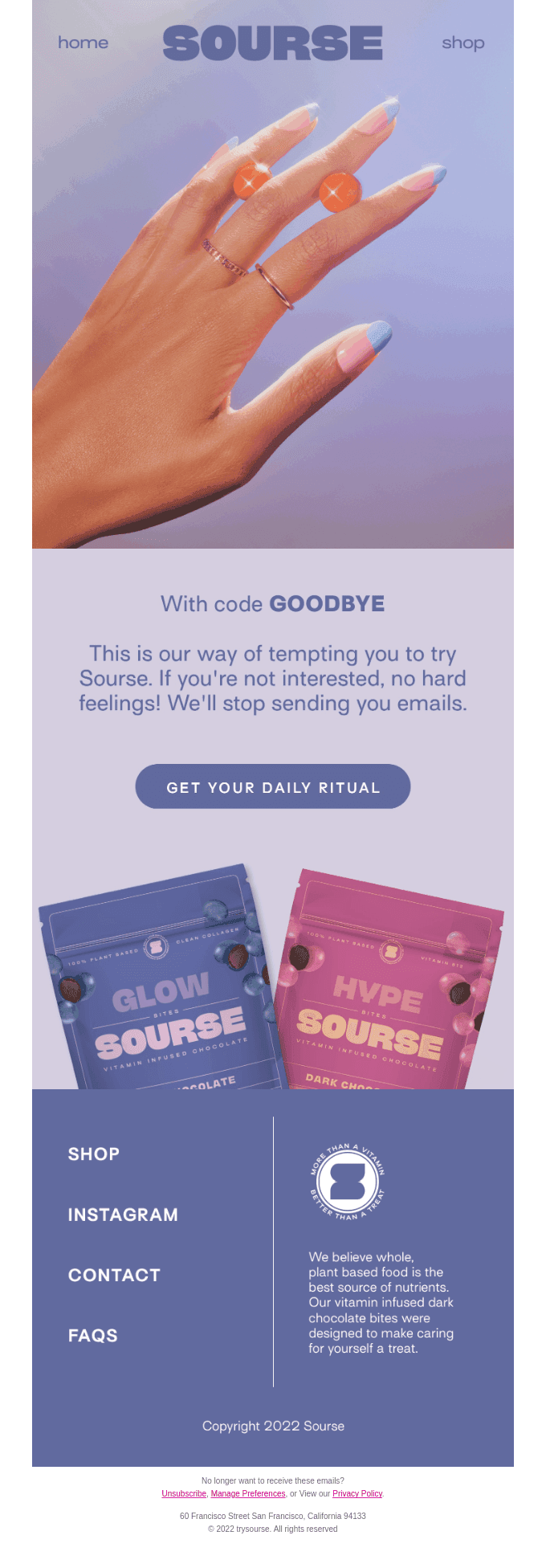
Re-engage using interactive emails
There’s no rule that you have to engage customers using formal emails just because you are running a business. Interacting with your customers using ways like polls, giveaways, games, and competitions relevant to your brand allows for higher engagement rates due to excitement.
However, you have to ensure that your emails are extremely relevant to your products as well as the customers. A non-relevant offer has a very high chance of getting ignored as customers would consider it a waste of time.

Personalized product recommendations
Tailored email follow-up that contains product suggestions based on past purchases can help you leverage customer engagement to drive repeat sales. These kinds of emails can let you make use of upselling and cross-selling techniques to boost sales.
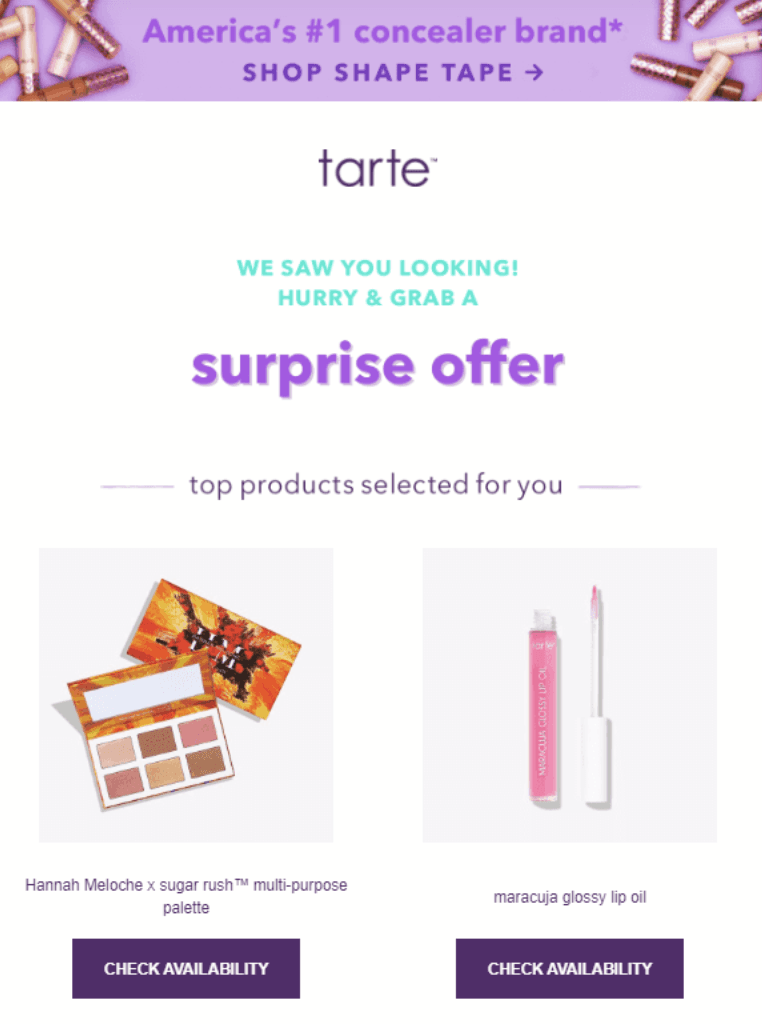
Want to send tailored product suggestions to boost conversions?
Get started for free with Zixflow and kickstart your email marketing initiatives to drive revenue
Book a DemoOffer incentives via referral programs
Referral emails allow you to motivate your customers to spread the word about your business within their circle via word-of-mouth marketing.
This way, you can generate sales-qualified leads using your existing customers while also encouraging them to make repeat purchases using rewards like exclusive discounts or free shipping coupons.
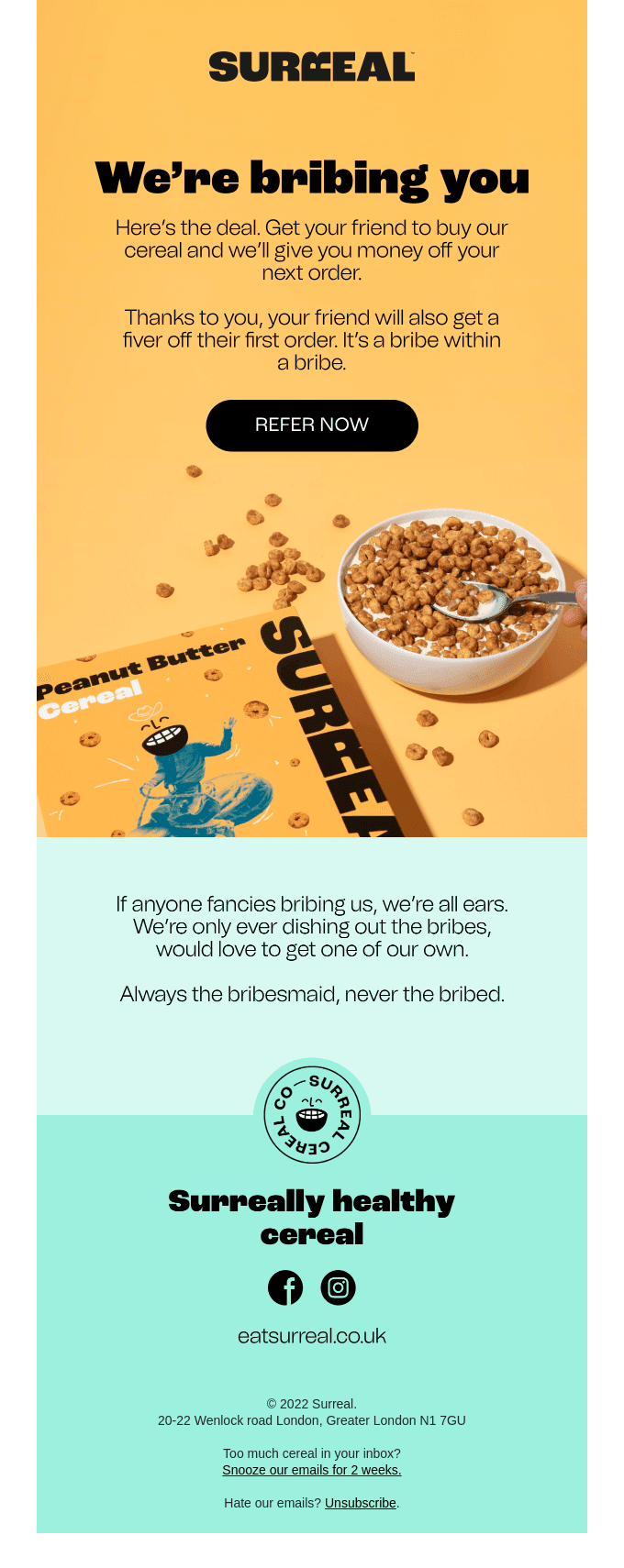
Attract customers using abandoned cart
It is the most common type of email in e-commerce as oftentimes customers leave their products without finishing the payment process after adding them into their carts. In fact, the average cart abandonment rate is 70% for online shoppers.
So, sending abandoned cart emails helps remind customers about their carts, incentivizing them to come back to complete the checkout process. These incentives can be in the form of cost-free shipping or flat discounts on the total value of the abandoned cart.

Drive sales with exclusive discounts
Sometimes the easiest things can get you the desired results that you might not have been able to achieve using the complex processes. I am saying that because customers are always looking for a favorable deal and if you can offer that, then you got yourself a sale.
Exclusive discount emails can serve a two-fold purpose, re-engaging customers who have not visited your platform for a while and giving them a reason to browse through your offerings to make the most of the discount you offered.
For this reason, sending tailored, exclusive offers can be a great means to generate quick sales as there is usually a time limit to redeem the offer.
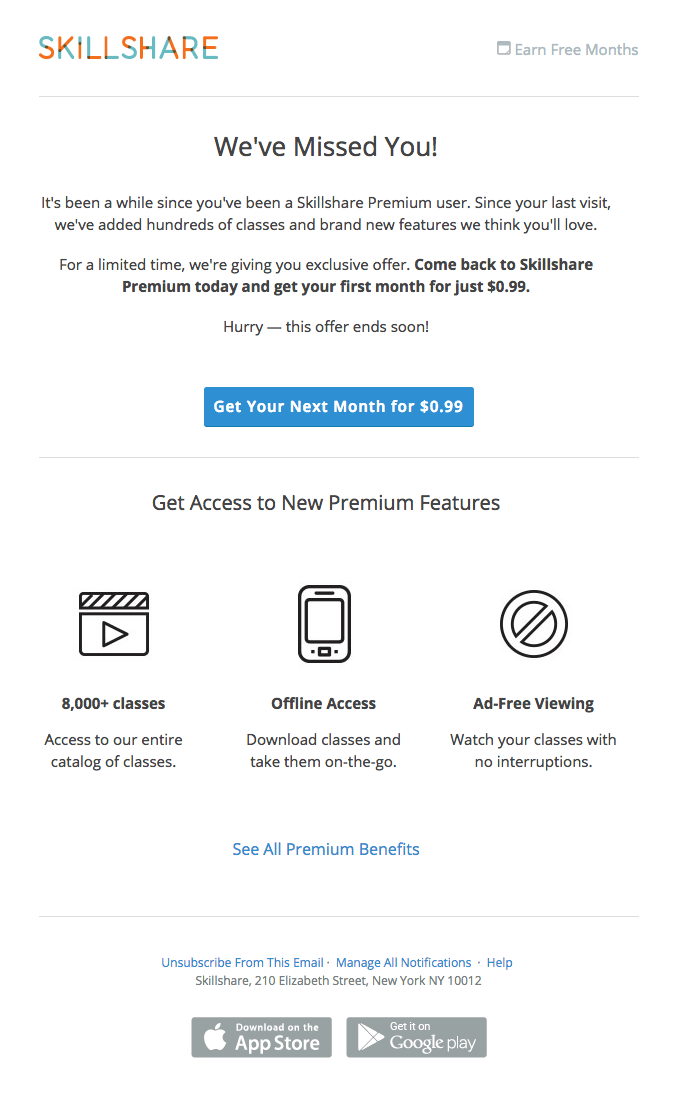
Requesting a product review
These emails compel customers to share what they think about a particular product. Asking customers to review products they have purchased helps build credibility and serves as social proof of the usability of your products. This social proof is a seal of approval, helpful in providing valuable information that potential buyers are interested in.

Notify customers using back-in-stock emails
Restock or back-in-stock update emails are also an amazing way to re-engage customers and notify them that a previously unavailable product is back in stock, prompting immediate action from their end.
These emails let you use a sales psychology technique known as FOMO, where you create a sense of urgency among the customers to stop them from missing out on a product again.

Inform customers about product restocks as soon as it happens
Automate follow-up emails with Zixflow to ensure you don’t miss out on an opportunity to contact customers and get sales
Get Personalized DemoDrive leads with new features email
Emails about new features are tailored towards informing customers about the latest updates and improvements to your products or services. By using these emails, you can highlight your commitment to improvement while also re-engaging customers.
You can design the emails in such a way that they hint at the FOMO aspect, showcasing the fact you do not want customers to miss out on these new features, and at the same time, encouraging them to check out your improved offerings that are built to deliver better customer satisfaction.
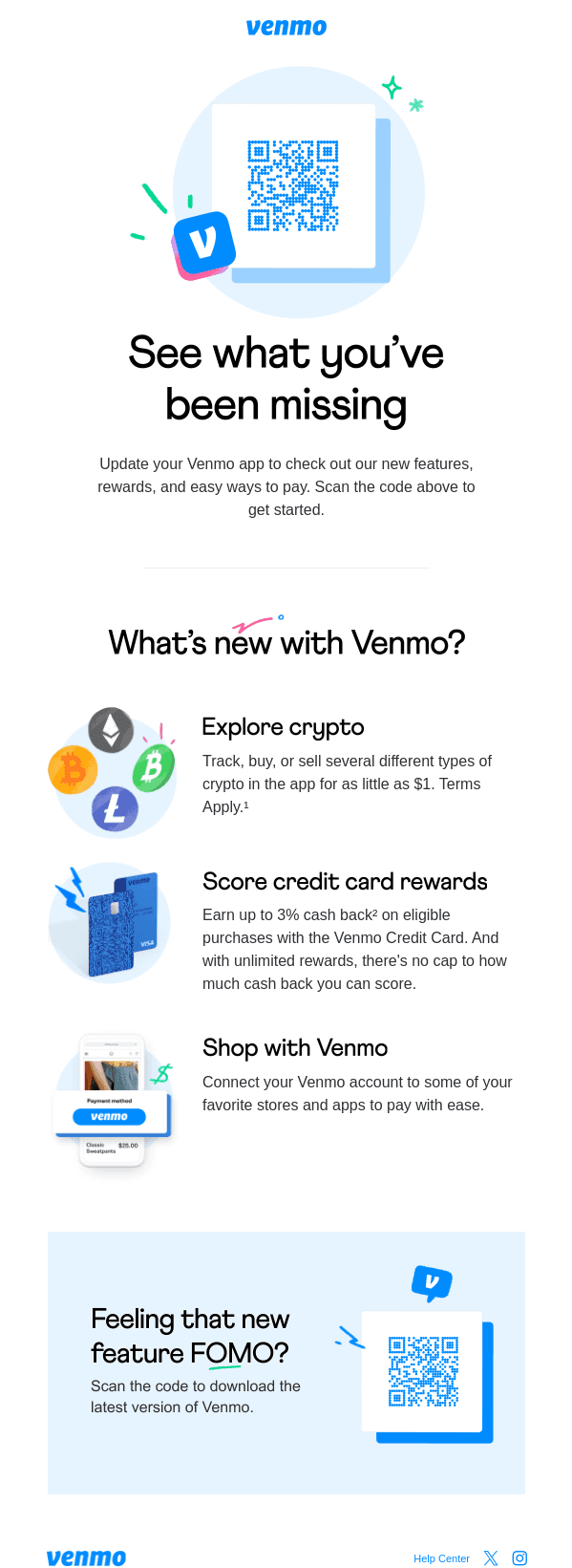
Enhance engagement by asking for feedback
As an e-commerce business, requesting feedback from customers demonstrates that you value their opinions and are eager to improve your services in order to enhance their sales experience.
You usually send these emails after a customer has used your product or service for a decent period of time, allowing them to give insightful feedback which can help you in refining your processes while also fostering a sense of involvement and loyalty among customers.
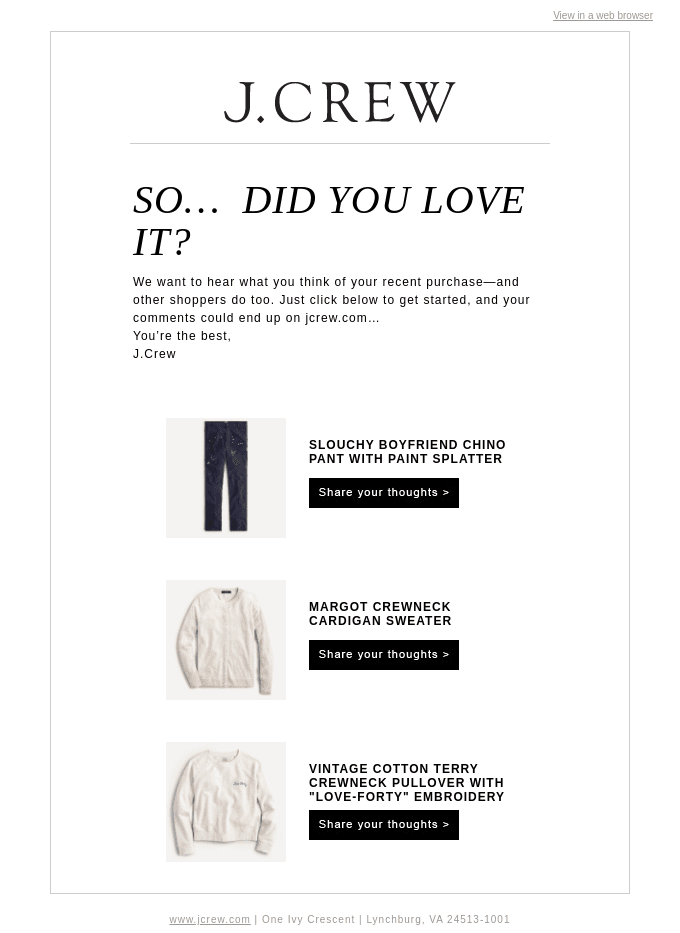
Show gratitude with customer appreciation emails
Customer appreciation emails are sent to express gratitude to customers for their constant loyalty and support. These emails commonly include special offers, discounts, or exclusive content as a token of your gratitude.
They aim to strengthen the emotional connection between you and the customer, allowing you to develop a customer-centric selling approach and a loyal customer base.

Inform about your preference updates
Finally, there are preference updated emails. When the customer is unresponsive even after continued follow-ups, it’s better to tag them as lost deals. However, before you do that, send the preference updated email to notify the customer that will no longer send them any engagement emails.
In addition to that, you should give the customer an option to subscribe back to your mailing list if they ever change their minds. Doing so will allow them to customize the type and frequency of communications they want to receive, ensuring that future interactions are relevant and welcome.
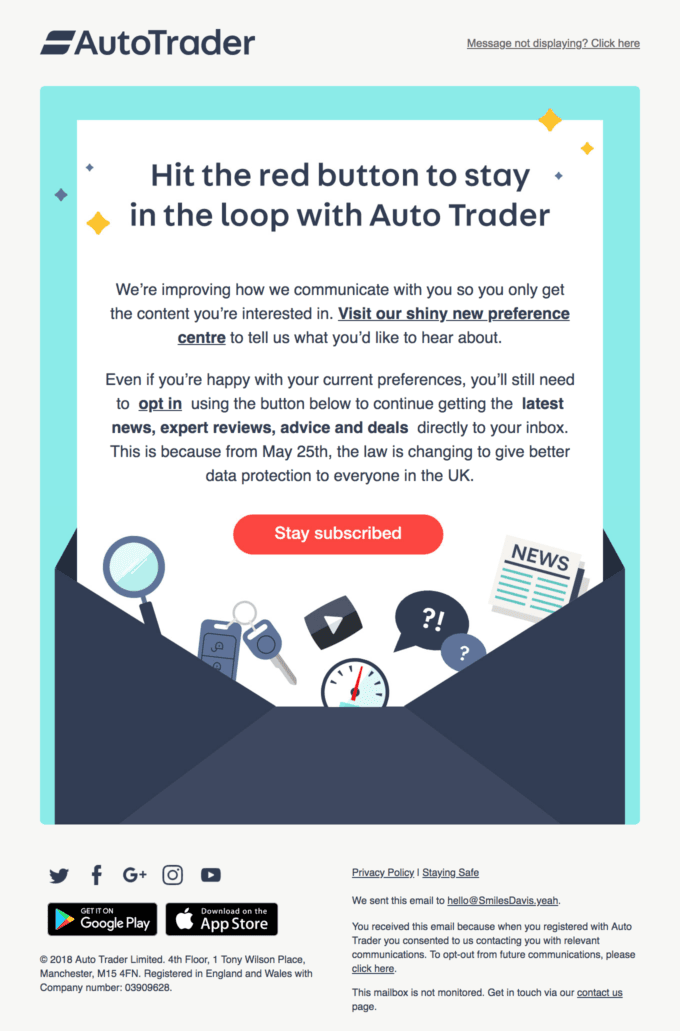
How to send these follow-up emails?
Now, you have a solid understanding of various kinds of follow-up emails that you can send to re-engage your customers.
However, here’s a question, “how to send these follow-up emails to your customers?”
Well, there is no ‘one shoe, fits all’ answer to that question. It depends on your business, its customer base, and how frequently you want to engage your customers.
For example, if you are a newer e-commerce brand with a limited number of customers, you can get by using common email tools like Gmail or Outlook. However, if you are a medium or large size company that has to send hundreds and thousands of emails, you will need a dedicated email marketing solution to handle your needs.
One of the stand-out tools for this purpose is Zixflow. It is a futuristic, multi-channel marketing platform that lets you craft and send tailored e-commerce emails to engage your customers to drive revenue.
Furthermore, it is a no-code solution, where you do not need much technical expertise to set up your email campaigns and send them out effectively. Pair that with its intuitive user interface, I can bet you that you can make the most of the platform from the get-go.
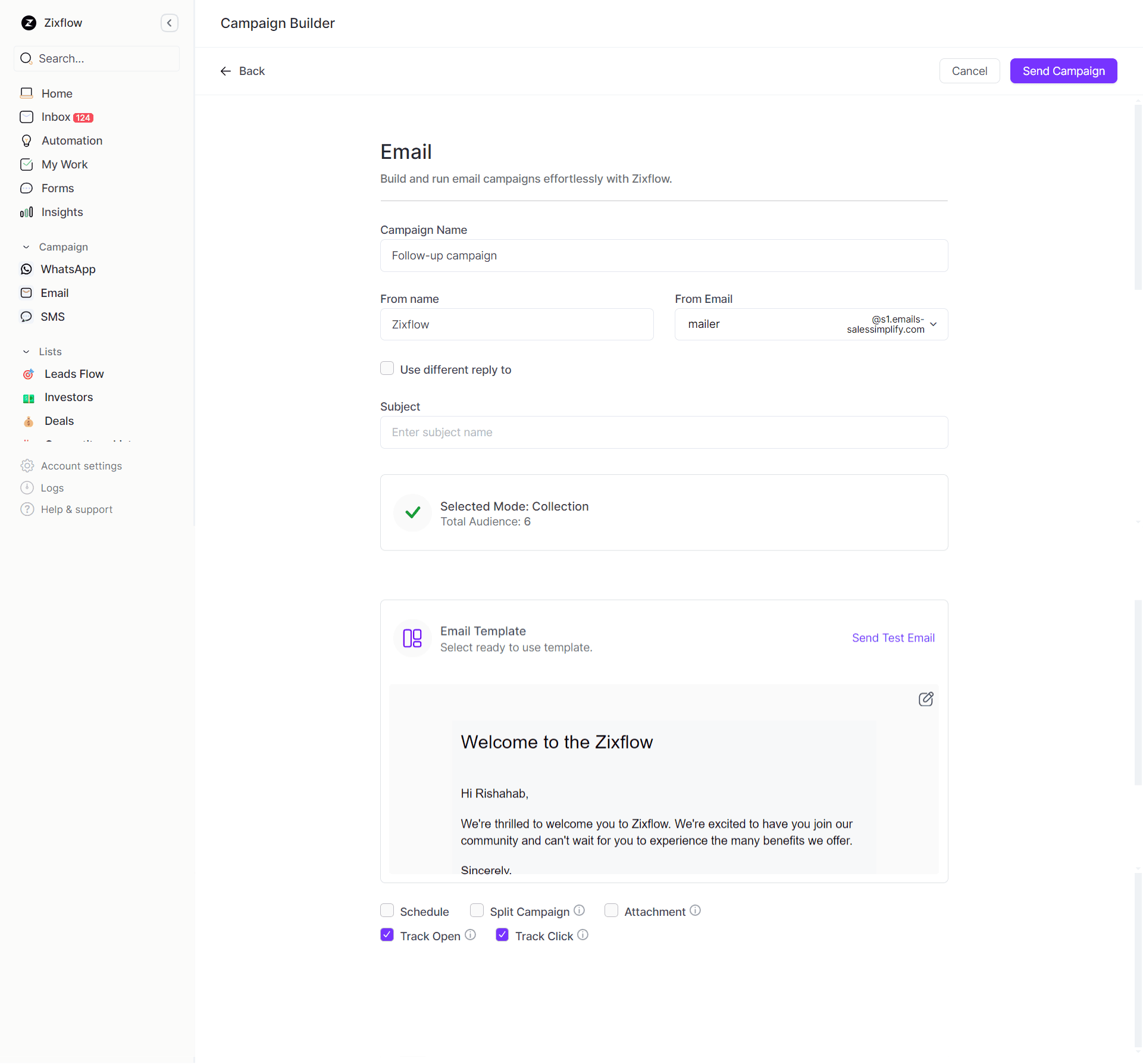
Not only does Zixflow allow you to send e-commerce emails manually, but you can also automate your follow-ups using sales cadences, ensuring that your customers receive these emails at the right time. Also, there are multiple ready-to-use cadence templates available in the platform, so that you can get started within minutes.
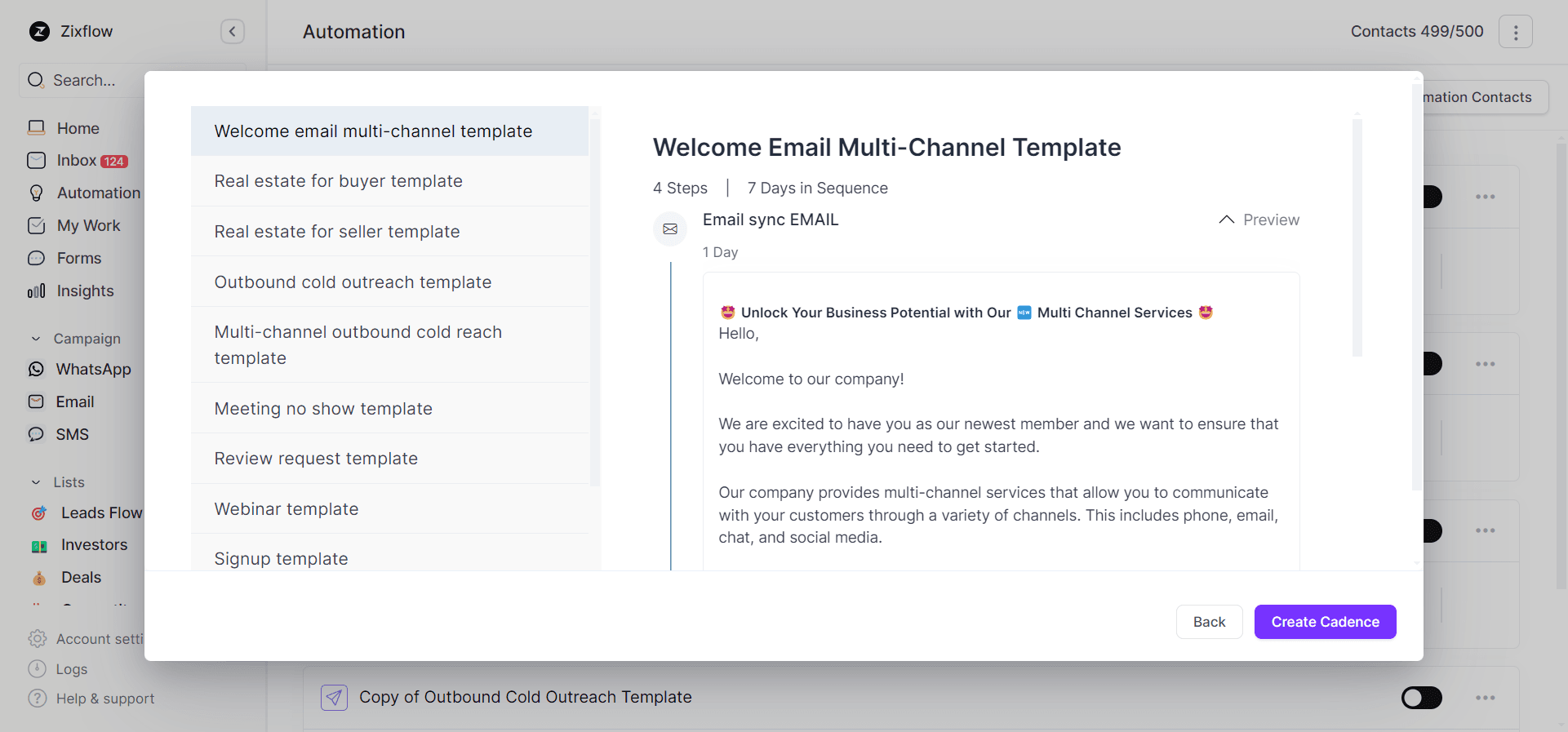
Now, you might wonder, what about replying to the incoming emails? Worry not, as Zixflow comes with a native centralized inbox to manage your incoming messages from within the platform. On top of that, you can sync your email accounts with Zixflow to manage your professional emails using the solution itself.
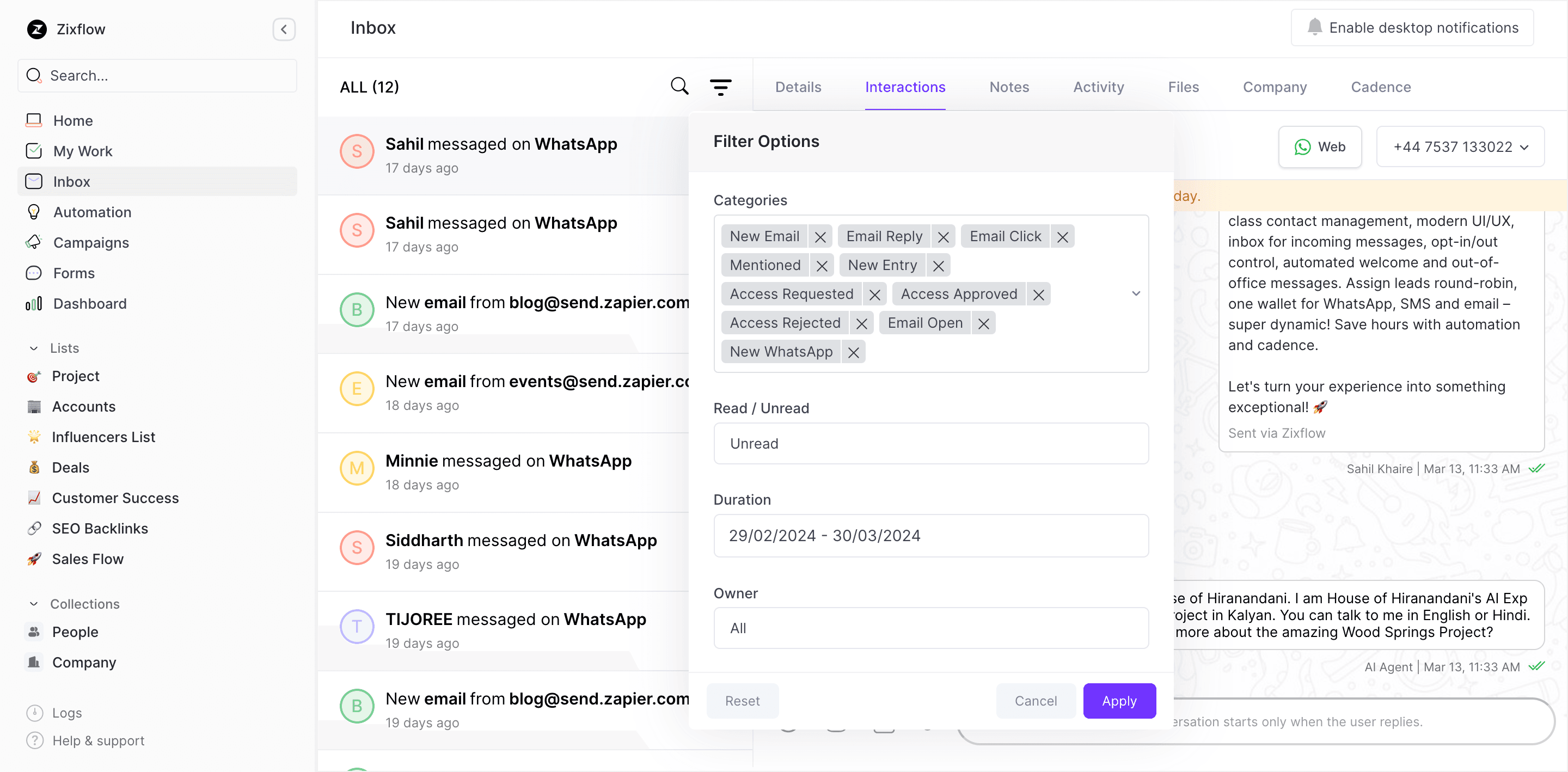
These are only a few of the many amazing features of Zixflow. So, if you want to see the platform in action, sign up for a free 7-day trial and experience the magic yourself.
Ready to re-engage your customer with these e-commerce follow-up email examples?
Sending follow-ups and reaching out to customers regularly is a critical part of running a successful e-commerce business. Without it, you could get lost in a sea of competitors and your customers might forget that you existed in the first place.
That’s why, you can use these 13 follow-up email examples to keep yourself in touch with your customers and encourage them to interact with your business one way or the other.
That being said, having a powerful tool to help you with your re-engagement efforts is just as important as the emails you send. An average tool can greatly limit your ability to interact with customers, leading to poor ROI and wasted resources.
So, if you are looking for an email marketing tool to enhance your outreach to the next level, get started with Zixflow. In addition to emails, it supports WhatsApp marketing and SMS outreach, allowing you to contact your customers using preferred channels for higher engagement rates and improved conversions.
